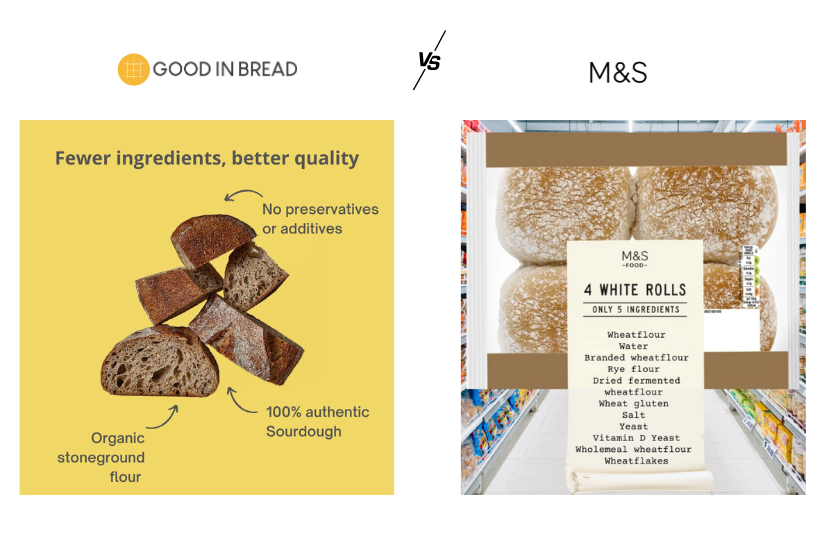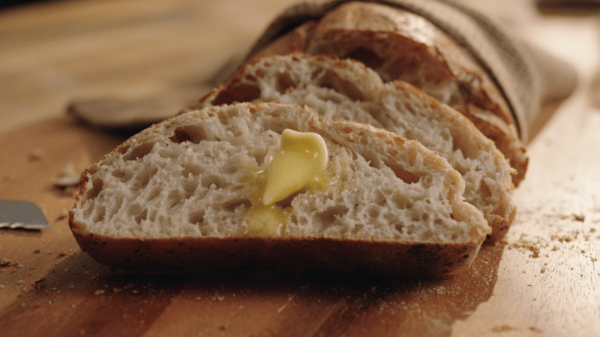The bread that’s causing a stir 🥖🔥

Unless you’ve been living under a stale baguette, you’ve probably heard the latest bread gossip. M&S has just dropped a new range of “cleaner” loaves, boasting fewer ingredients and a more “natural” recipe. Sounds great, right? The food world is buzzing, wellness influencers are nodding in approval, and supermarket shoppers are feeling very virtuous about their sandwich choices.
But here’s the twist – while the ingredient list may be shorter, the claims don’t quite add up. So, is this a true bread revolution or just a clever marketing move? Let’s break it down.
Less is more… or is it?
We’ve been banging the drum about short ingredient lists since day one. Real bread should be simple – our sourdough is made with just three ingredients: flour, water, and salt. So, in theory, M&S jumping on the “less is more” train is a win. Transparency? Love it. Fewer additives? Even better.
But here’s where things get a little crusty…
What’s really in that loaf?
M&S claims its bread is made from just five ingredients. But flip the pack over, and you’ll find 11 ingredients listed – or 15 if you count the ‘fortificants’ added to the flour. So how does that work?
There’s also the sourdough claim. The front of the pack boasts “sourdough culture,” but it doesn’t appear in the ingredients. It looks like it’s actually ‘dried fermented flour,’ so it’s unclear why it’s labelled differently. Perhaps less transparent than it seems…. check out the Real Bread Campaign’s post to find out more.
Let’s compare:
🔍 M&S bread uses fortified white flour, which removes essential nutrients during processing and then adds them back artificially. We use stoneground flour, which keeps the whole grain intact for better nutrition and flavour. Plus, our flour is organic – so no sneaky pesticides.
⏳ M&S uses yeast to speed things up, meaning their loaves don’t get the long, slow fermentation that makes real sourdough easier to digest. Our bread? Naturally leavened, wild fermentation, gut-friendly goodness.
⚡ Their loaves might be preservative-free, but they’re still made using industrial baking methods. Ours take time, patience, and traditional techniques to develop naturally.
Marketing or movement?
We love seeing big retailers take steps towards better food, but let’s be real – this isn’t exactly a grassroots sourdough revolution. It’s a smart marketing play, but if we really want to improve the way we eat, we need to look beyond just what’s in our food and focus on how it’s made.
If you want to find out more check out our earlier post, where you can comment. 🍞💭
